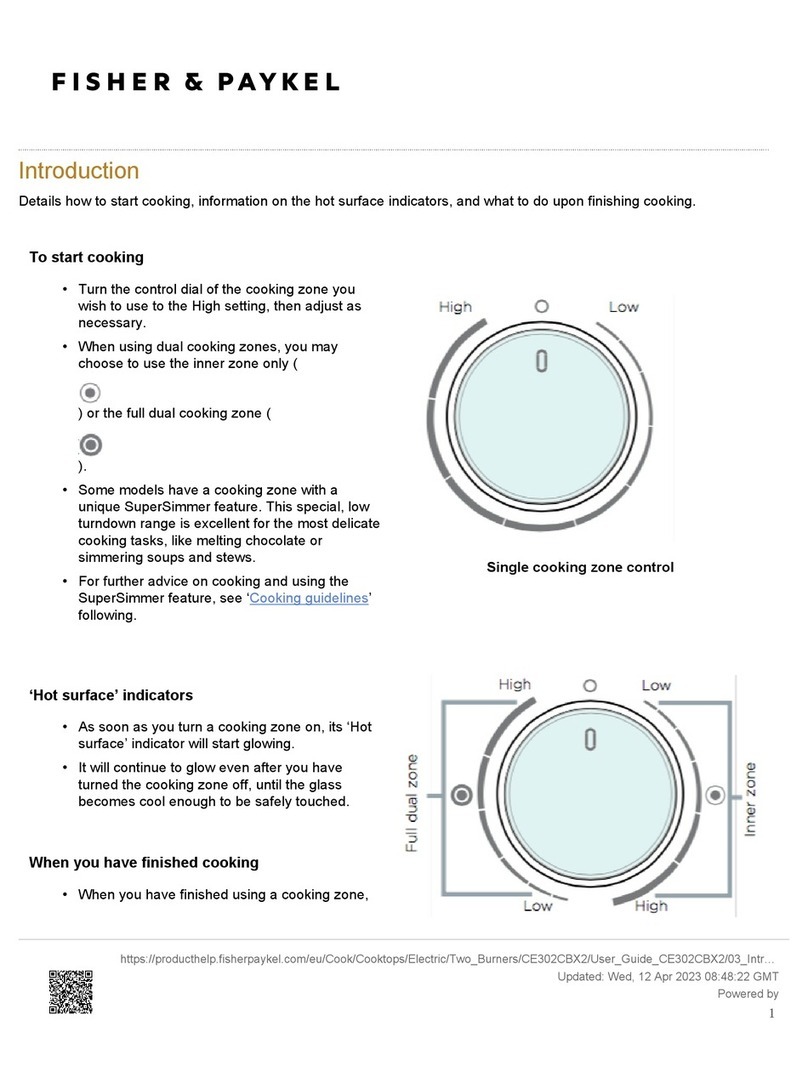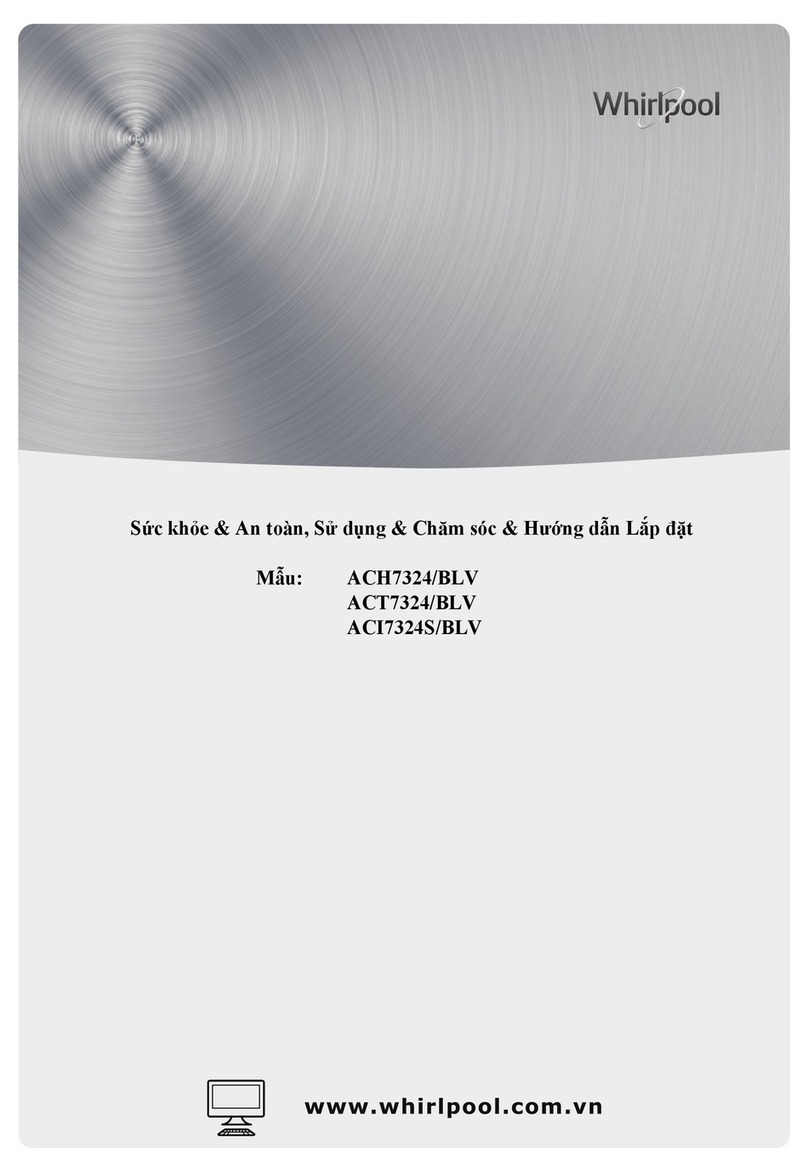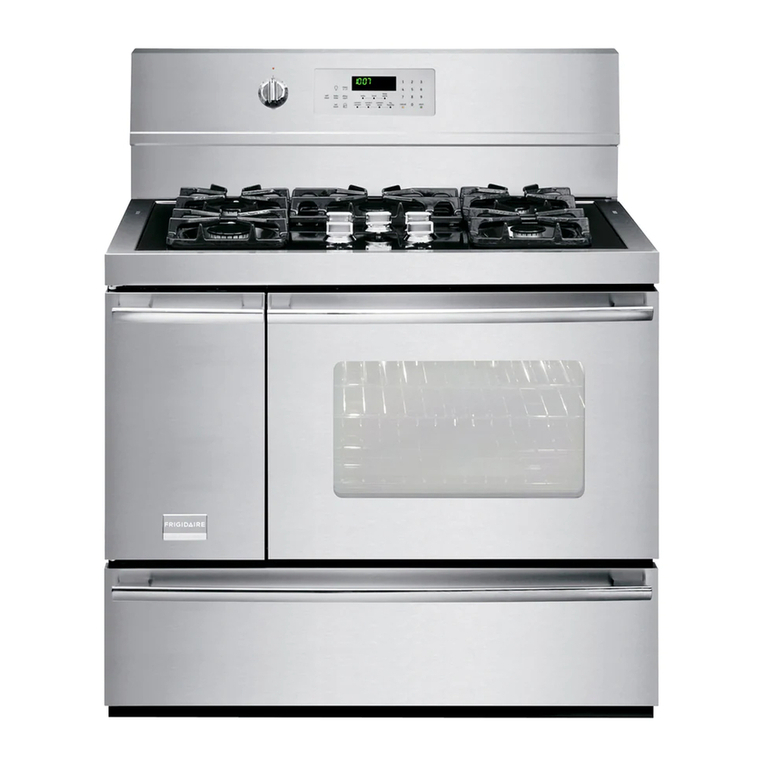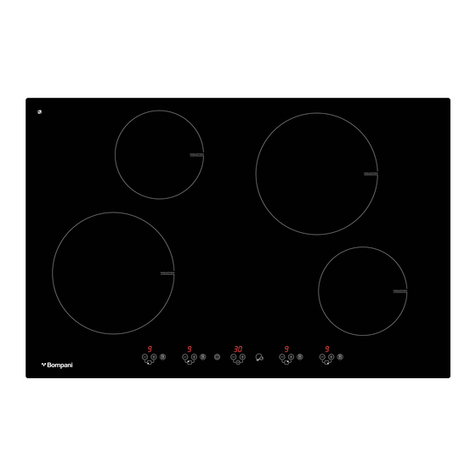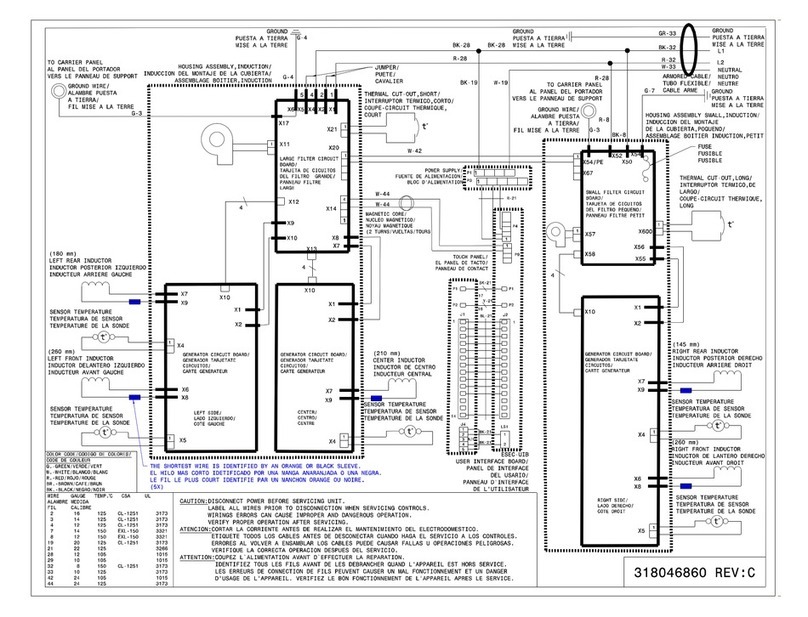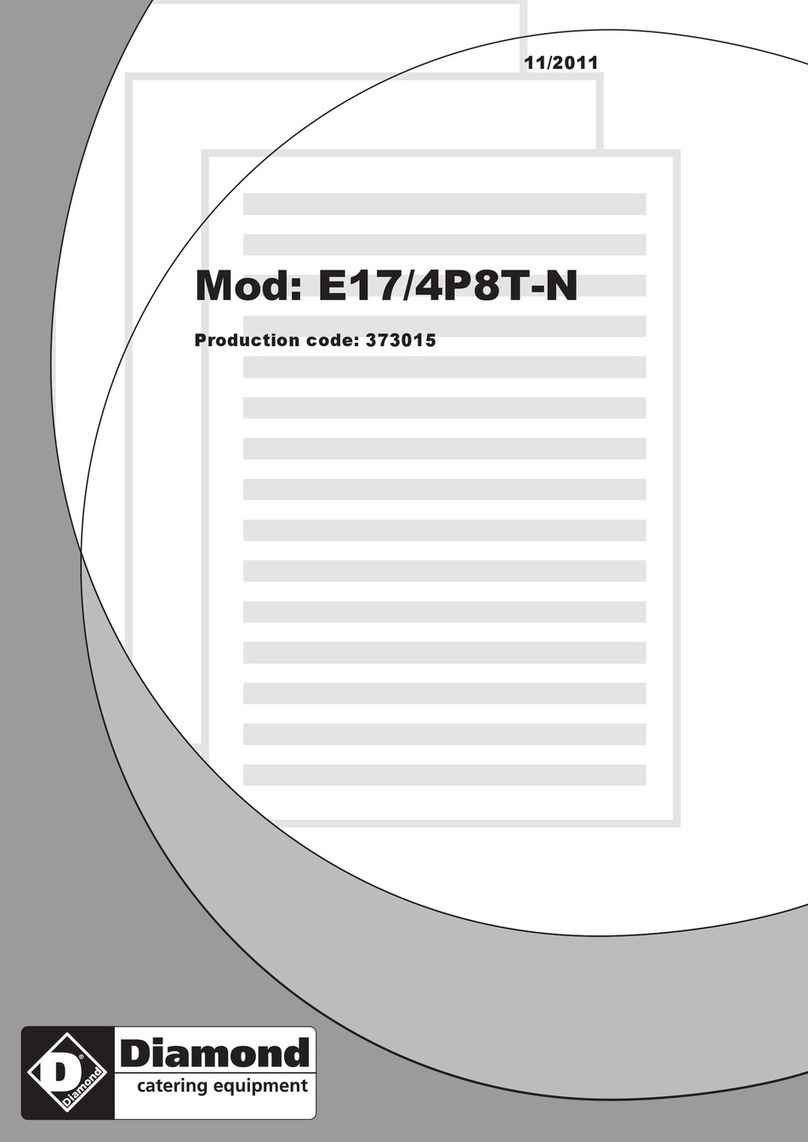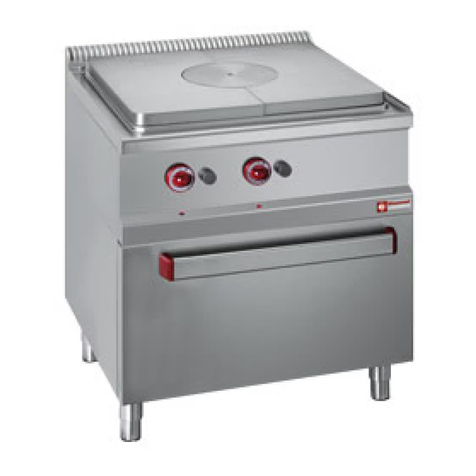
A010323 Rev. 1 Pag. 6 di 8
6.3 Electrical connections
Connections must be made by a qualified electrician in accordance with the local standards in force. The equipment's electric circuit is
designed to work with a single-phase supply voltage of 230 Volts and a frequency of 50/60 Hz. See wiring diagram
Fig. 2, applicable to the model you have purchased.
The electrical connection is made by connecting the cable to the terminal board of the unit.
The cable must have the features of type H05 RNF or better, and must feature an efficient earth wire of an appropriate size for the total power
of this unit and any other units or accessories connected on the same terminal board (see rating plate). The units electrical supply system
must feature an appropriately sized automatic omnipolar circuit breaker upstream that assures a gap between the contacts of at least 3mm.
There must not be any breaks in the earth cable.
The electrical safety of this equipment is only assured when the above-mentioned conditions are met and if the systems equipotential situation
is also in order (use the connection screw located near the power cable entry and the
label featuring the symbol)
The manufacturer declines all responsibility in the event these safety standards are not complied with.
7. OPERATION / USE
7.1 Operating tips
·This appliance must only be used for its intended purpose. This consists of the display and conservation of foods at temperature in pots
and pans. Any other use shall beconsidered improper.
·In order to avoid scratching the safetyglass top, you are recommended to use pots and pans with smooth, flat bottoms. If the safetyglass
top is used as a worktop (when cold), it must be cleaned thoroughly before it is next switched on. If pans are placed on top of abrasive
residues, the safety glass top may be scratched.
·Before using the equipment for the first time, clean the safety glass top with a suitable product and kitchen towel. Avoid using abrasive
detergents or scouring powders.
·Lastly, wipe the top with a damp cloth and dry thoroughly.
7.2 Starting up
·To power the glass top place switchA in pos. 1 (Fig.1) , adjust the thermostat Bto the desired temperature, when the plate is in
operation, indicator lightCwill beon. The graduated scale is meant as a rough guide only.
7.3 Shutdown
Turn the unit off by turning the knob B (plate) all the way around counter-clockwise, and check that indicator light Cgoes off, place switch A
in pos. 0.
Turn off the switch upstream from the unit.
In the event the unit is to be left off for a lengthy period:
a) switch off the electrical power supply;
b) clean the top thoroughly;
c) protect the stainless steel surfaces by covering them with Vaseline oil, rubbing vigorously with acloth soaked in the oil;
8. CLEANING AND MAINTENANCE
8.1 Routine maintenance
The routine and preventive maintenance basically consists in the weekly cleaning of the stainless steel parts with lukewarm soapy water,
rinsing abundantly and drying thoroughly. The unit must only be cleaned after first disconnecting the power supply upstream from the
equipment.
In order to get the most out of the safety glass top, it is essential you bear in mind a number of tips and instructions:
·Before starting, remove any dirt or food left on the safetyglass top with a special scraper.
·Next, pour a few drops of a suitable detergent onto the COLD safety glass top and rub with kitchen towel (or a soft cloth).
·Rinse the safety glass top and dry with a clean cloth or kitchen towel.
Important:
·In the event sheets of aluminium or plastic, sugar or food containing sugar melt onto the surface of the safety glass top, they must be
removed from the hot cooking area immediately with ascraper. This will prevent possible damage to the surface.
Before cooking food with a high sugar content (e.g. jams), apply a protective product on the tops surface to prevent damage from spills from
the cooking receptacle.
Do not use abrasive sponges or products of any kind, or detergents such as oven cleaning sprays or stain-removers.
Attention:
·Under no circumstances should you use abrasive or corrosive detergents and utensils such as steel wool, brushes or metal scrapers.
·Bleach, hydrochloric acid and other compounds containing chlorine will damage the stainless steel.
·The coloured parts must be cleaned with silicone wax.
·The floor under the unit must not be washed with corrosive substances that might generate vapours damaging the equipment.
·During cleaning, do not wash the equipment with jets of water.
8.2 Non-routine maintenance
Special maintenance must be performed by qualified personnel in the event of a fault or anomaly,wherever possible with the equipment
disconnected from the power mains.
In this case, repairs or replacements might be required. The faultyparts must onlybe replaced with materials and components identical to the
originals or specified by the Manufacturer.
The replacement of components or the modification of the equipment by the user without written permission from the Manufacturer, or the use
of non-authorized spare parts, shall instantly cause the warranty to be void.
8.3 Possible errors
If the glass top does not heat up, check the electrical power supply, that switch A is not in pos. 0 and that the plate regulation thermostat is
not set to the minimum.
If, after performing the checks indicated, correct operation is still not achieved, switch off the equipment and contact the supplier without
delay.
9. SCRAPPING
At the end of its service life, the equipment must be disconnected from the power mains before disassembling the various components.
Special care must be taken to avoid the risk of accidents associated with theform and weight of each component.
The various parts (electrical components, rubber piping, cable sheaths, etc.) must be selected so as to make the best possible contribution to
the protection of the environment in compliance with thelaws in force.
GB
